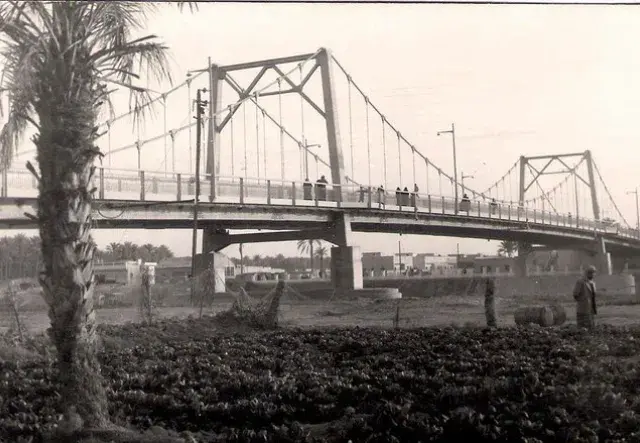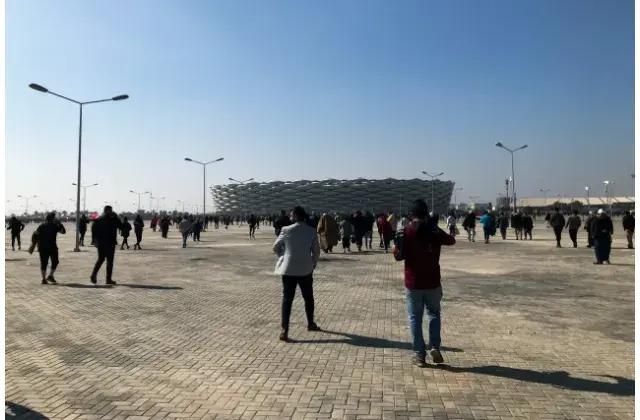From the Aftermath of World War II to King Faisal II and the Monarchy's Doom (1945 - 1958 )

Shortly before the end of World War II, on 22 March 1945, the League of Arab States was formed in Cairo with Iraq as one of the six founding members. After World War II, likewise in other countries, the necessity for a new beginning prevailed in Iraq. On 27 December 1945, regent King Faisal II announced the end of martial law, more political freedom, readmission of political parties, lifting of press censorship, measures to improve social security, economic reform and an open door for the younger generation, especially in the military, thus reversing British-imposed law right after WWII ended. In 1947, the Central Bank of Iraq was established.
In contrast to nation-wide interests, Nuri Al Said negotiated a new contract with the British and on 15 January 1948 a new Anglo-Iraqi Treaty, the Portsmouth Treaty, was signed which codified the British privileged status until 1973 (instead of 1958). A mass demonstration sparked what is known as al Wathba (the leap) uprising. For the first time, the people themselves were protesting with students on the forefront, workers and Baghdad’s destitute inhabitants, to protest against the Portsmouth treaty amid deteriorating living conditions, such as poverty, negligence, greed, and injustice. The protest was bloodily suppressed, but the Portsmouth Treaty was cancelled.
Due to an enormous increase in oil royalties accruing to the state, the Iraq Development Board was established and was in operation from 1950 to 1958. In 1952, Nuri Al Said negotiated a fifty-fifty profit-sharing agreement between the government and the Iraqi Petroleum Company (IPC). The Iraqi government had allocated 70 % of oil revenue to the development of different industries, to improve land, water irrigation, drainage and storage, air communication, roads, bridges, ports and airports, and to construct both public buildings and low-income houses. The work of the Board was highly criticised as it put prestige projects before the needs of the people, which included as example forced industrialisation, a concentration of investments in metropolitan centres and unrestrained irrigation and land reclamation schemes. The British economist Lord Salter advised the board in his report "Plan of Action" presented to the Development Board in spring 1955, to spend much greater resources on housing, health, clean water system and education in order to bring more immediate benefits to wider sections of the population. Even though his recommendations were acted upon at least in the plan, the actual expenditure proved to be less than planned. The welfare was only for an elite group of leaders in the government. The people still suffered under deteriorating living conditions.
On 2 May 1953, King Faisal II attained his majority and was enthroned. He was more an art lover than a politician. Apart from providing art education and scholarships of the nineteen thirties, the state's recognition of artists was first accorded officially in February 1956 by hosting the first comprehensive exhibition of Iraqi art at Al Mansour Club in Baghdad under royal patronage. Later that year the Iraqi Artists Society was launched with King Faysal II as a founding member. King Faisal II had a utopian vision of a ‘Greater Baghdad’. Via the Iraq Development Board renowned international architects were invited to design for public buildings, e.g. Alvar Aalto, Walter Gropius, Le Corbusier, Werner March, Oscar Niemeyer, Frank Lloyd Wright, J. Brian Cooper and William Dunkel. Only a few design drafts were implemented such as the Baghdad University Compound designed by Walter Gropius and his architectural firm 'The Architects Collaborative' (TAC). These visions for a ‘Greater Baghdad’ had many critics who considered the plans as very much westernised in a country and in a time of Iraqi nationalism, Arab nationalism and Nasserism.
On 24 February 1955, the Baghdad Pact was formed by Iraq, Iran, Pakistan, Turkey and the United Kingdom, as a military alliance of the Cold War and initiated by the United States. It was again Nuri Al Said who pushed for the agreement.
Although the country experienced material progress, the monarchy did not enjoy public support, particularly from the younger generation of leaders. The Egyptian Revolution of 1952, led by Gamal Abdel Nasser, provided an impetus for a similar undertaking in Iraq.
In 1954, the Iraqi opposition were united under the Front of National Union, which included various groups like the National Democrats, Independents, Communists, and the Baath Party. A group of young military officers formed the Supreme Committee of Free Officers, inspired by Egypt’s example. In response to the United Arab Republic's formation between Egypt and Syria, Iraq and Jordan established the Hashemite Arab Federation on February 14, 1958, with support from Great Britain, the United States, and Saudi Arabia, marking a significant turning point in national and regional politics. On July 14, 1958, a coalition of discontented army officers — also known as the Free Officers under the leadership of Colonel Abdel Karim Qasim — ended the thirty-seven-year Hashemite monarchy and proclaimed the Republic of Iraq. The coup enjoyed widespread public support.
Following the coup, King Faisal II, the Regent, was assassinated along with members of the Iraqi royal family, with Nuri al-Said meeting the same fate at the hands of protesters the next day. Their bodies were publicly displayed in front of the symbolically significant location of the Ministry of Defense.
This article was written by Hella Mewis and is licensed under CC BY-NC 4.0.






